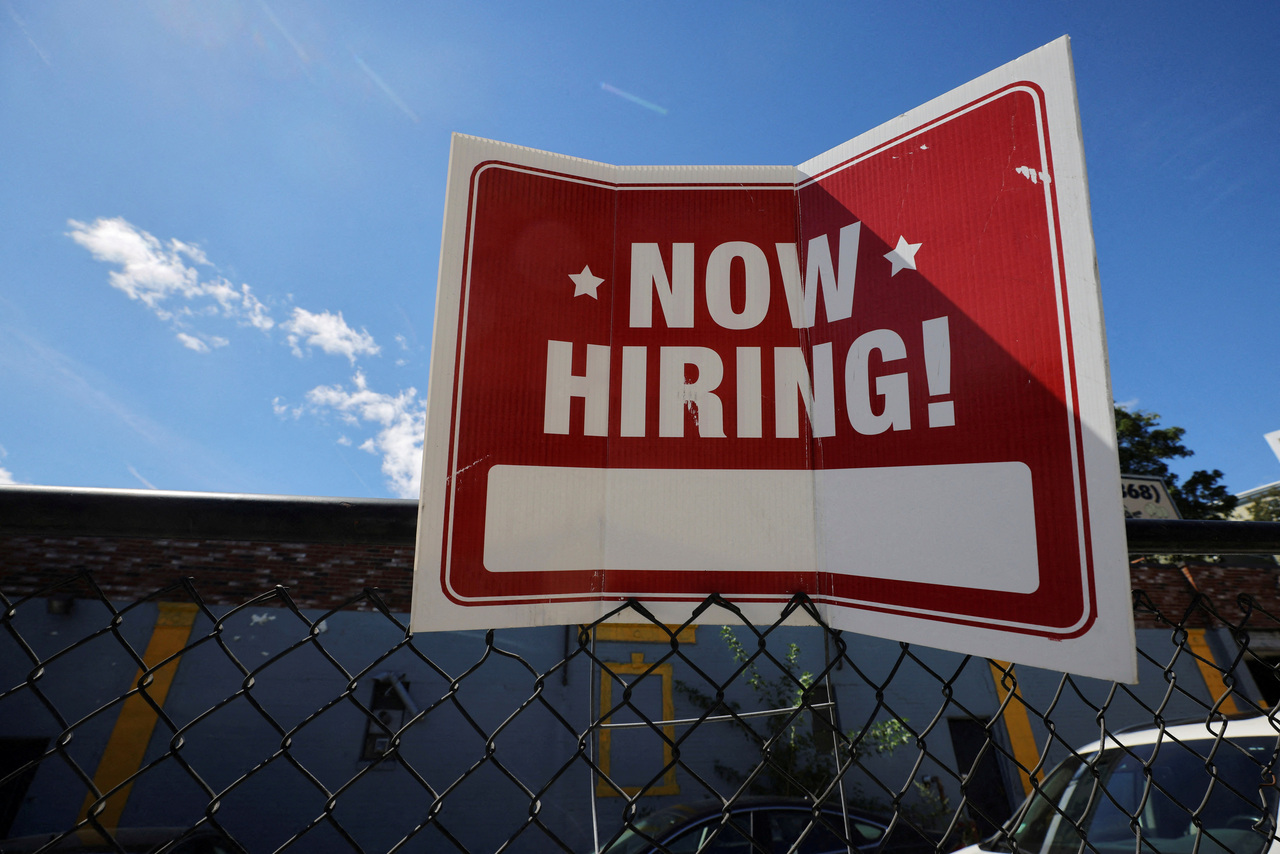US jobs rise while unemployment drops, keeping pressure on Fed
Sign up now: Get ST's newsletters delivered to your inbox

The jobs report showed average hourly earnings were up 0.3 per cent from August.
PHOTO: REUTERS
Follow topic:
WASHINGTON - US hiring continued at a solid, yet more moderate pace in September and the unemployment rate fell, indicating the labour market remains tight and has so far proven resilient to steep interest-rate hikes by the Federal Reserve.
Non-farm payrolls increased 263,000 in September - the smallest monthly advance since April 2021 - after a 315,000 gain in August, a Labour Department report showed Friday. The unemployment rate unexpectedly dropped to 3.5 per cent, matching a five-decade low. Average hourly earnings rose firmly.
The median estimates in a Bloomberg survey of economists called for a 255,000 advance in payrolls and for the unemployment rate to hold at 3.7 per cent. Hiring was relatively broad-based, led by gains in leisure and hospitality and healthcare. The figures are the latest illustration of the perennial strength of the US job market.
While there have been some indications of moderating labour demand - most notably a recent decline in job openings - employers, many still short-staffed, continue to hire at a solid pace. That strength is not only underpinning consumer spending but also fuelling wage growth as businesses compete for a limited pool of workers.
The Fed, meanwhile, is hoping to see a significant softening in labour market conditions, with the goal of cooling wage growth and ultimately inflation.
This is the last jobs report Fed officials will have in hand before their November policy meeting as they consider a fourth-straight 75-basis point interest-rate hike.
Fresh inflation data out next week will also play a fundamental role in their decision-making. The report is projected to show the depth and breadth of the Fed's inflation problem, with a key gauge of consumer prices potentially worsening.
Stock futures fell and Treasury yields rose as the strong report reaffirmed bets that the central bank will continue to be aggressive with its tightening campaign. The labour force participation rate - the share of the population that is working or looking for work - eased to 62.3 per cent.
The jobs report showed average hourly earnings were up 0.3 per cent from August and up 5 per cent from a year earlier, a slight deceleration from the prior month but still historically elevated.
The solid increase suggests the Fed will have to continue to raise interest rates as it aims to rein in rapid wage growth that has bolstered household spending. Central bank officials have been clear recently about their commitment to taming inflation, even if that leads to higher unemployment and recession, because they say that failing to do so would be worse for Americans.
Fed Chair Jerome Powell said last month that slower growth and a softer labour market are painful for the public, but that there is no "painless" way to get inflation down. BLOOMBERG

